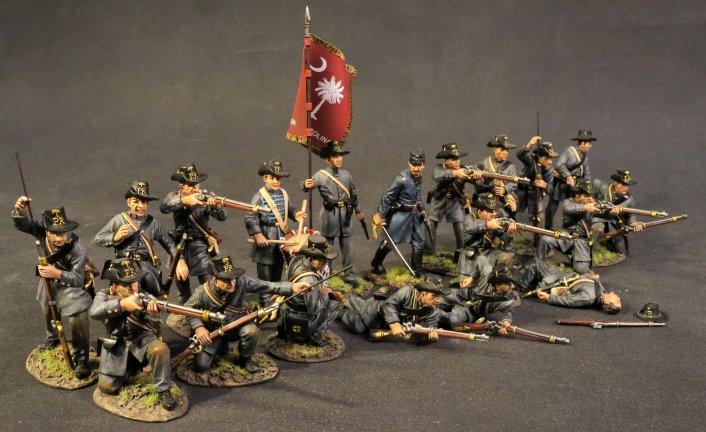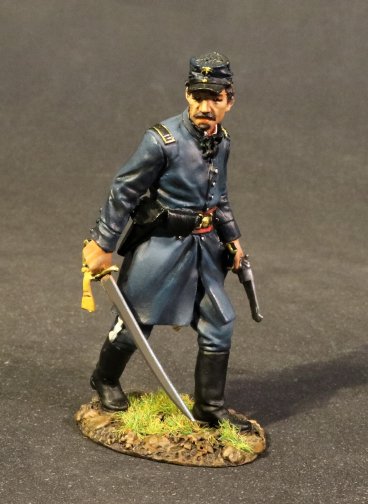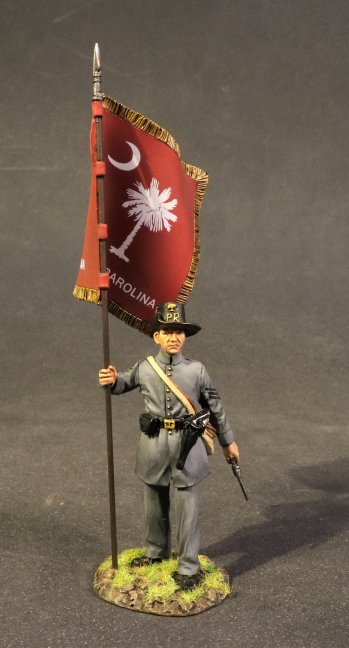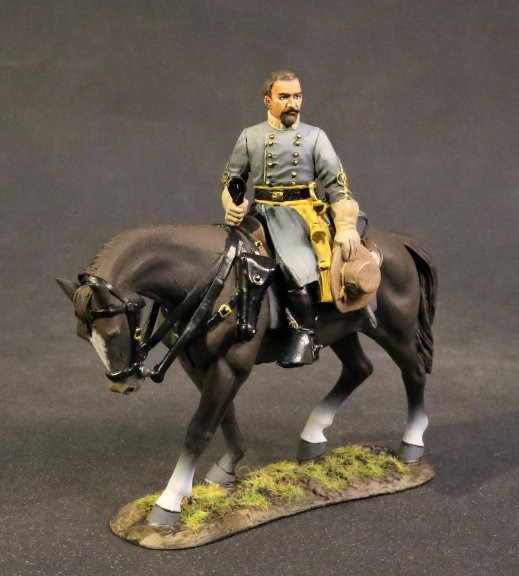- Joined
- Feb 2, 2011
- Messages
- 2,093
NEW RELEASES FOR AUGUST 2020
AMERICAN CIVIL WAR
THE PALMETTO RIFLES

The 4[SUP]th[/SUP] South Carolina Regiment, was part of Colonel Nathan G. “Shanks” Evans’ Brigade, which was originally posted on the extreme left of the Confederate line, defending the small stone bridge, which carried the Warrenton Turnpike across the Bull Run River.
Evans eventually left 4 companies to hold the bridge, and took the rest of his brigade further to his left to oppose the Union flank march under Colonel Ambrose E. Burnside. Evans positioned his men on an excellent defensive position on Matthews Hill, which had good tree cover for his riflemen and his two six pounder guns. The 4[SUP]th[/SUP] South Carolina Regiment was placed on the left with one of the guns, and the 1[SUP]st[/SUP] Louisiana on the right with the other gun.
They were to meet the leading column of Mcdowell’s flanking force, men of the 1[SUP]st[/SUP] Rhode Island Regiment, led by Colonel Ambrose E. Burnside
Although Evans had only approximately 900 men, he faced a command of over 6,000. The fire from Evans’ brigade was so effective it temporarily halted the northern forces advance, and bought them enough time until they were reinforced by General Bee’s command.

CSPR-01
THE AMERICAN CIVIL WAR 1861 - 1865
4[SUP]th[/SUP] SOUTH CAROLINA INFANTRY, Co B
PALMETTO RIFLEMEN,
INFANTRY OFFICER.
(1 pc)

CSPR-02
THE AMERICAN CIVIL WAR 1861 - 1865
4[SUP]th[/SUP] SOUTH CAROLINA INFANTRY, Co B
PALMETTO RIFLEMEN,
STANDARD BEARER.
(2 pcs)
The Palmetto Riflemen were raised in Anderson in 1861, South Carolina and were designated as Co. B, 4[SUP]th[/SUP] South Carolina Infantry. By 1862 the regiment was re-organized as the 4[SUP]th[/SUP] South Carolina Battalion, but by the end of that year it had been consolidated into two companies that became Cos. I and K of Hampton’s Legion.
Local women made the dark grey frock coats and trousers during February 1861, and an entry in the local “minute book” stated that the brass PR should be worn on the Hardee hats.
With the 1862 re-organization of the Confederate army, many men from the originally established South Carolina companies elected to re-organize into a newly created Regiment of Palmetto Sharpshooters.
Colonel Micah Jenkins was the founder and Commander of this Regiment, who under a special act of Confederate Congress was authorized to organize 12 Companies into a specialist regiment of sharpshooters, the Companies of which would have been detached to various Brigades wherever they were needed, their duties would have included advanced picket duties, point and flank guards to protect heavy infantry columns from cavalry attack, night assaults against federal outposts and pickets and of course general sharp shooting to create havoc anywhere in the Union lines. Unfortunately it would appear that they generally fought as heavy infantry throughout the war.

CSPRJENKINS
THE AMERICAN CIVIL WAR 1861 - 1865
PALMETTO RIFLEMEN,
BRIGADIER GENERAL MICAH JENKINS.
(2 pcs)
Micah Jenkins (December 1[SUP]st[/SUP], 1835 – May 6[SUP]th[/SUP] 1864) was a Confederate general in the American Civil War, mortally wounded by friendly fire at the Battle of The Wilderness.
At the First Battle of Bull Run, Jenkins was Colonel of the 5[SUP]th[/SUP] South Carolina Infantry Regiment, under the command of David R. Jones.
At the Battle of Seven Pines he was brigade commander of the 5[SUP]th[/SUP] South Carolina, the 6[SUP]th[/SUP] South Carolina and the Palmetto Sharpshooters. He was considered one of the war’s “boy generals”, and was promoted to the rank of Brigadier General on July 22[SUP]nd[/SUP] 1862.
Wounded at the Second Battle of Bull Run in August 1862 he was to miss the Battle of Antietam.
His Brigade served in the division of Maj. Gen. George Pickett at the Battle of Fredericksburg, although it was not engaged. Pickett’s division participated in the campaign of Lt. Gen. James Longstreet against Suffolk, Virginia in 1863, but Jenkins’ brigade was retained near Richmond , Virginia, missing the Battle of Gettysburg.
During the Battle of the Wilderness, Jenkins was riding with Lt. Gen Longstreet when both were struck down by friendly fire, on May 6[SUP]th[/SUP] 1864. Although Longstreet survived, Jenkins died of his head wound a few hours later.
**PLEASE CONTACT YOUR LOCAL DEALER FOR FURTHER INFORMATION**
AMERICAN CIVIL WAR
THE PALMETTO RIFLES

The 4[SUP]th[/SUP] South Carolina Regiment, was part of Colonel Nathan G. “Shanks” Evans’ Brigade, which was originally posted on the extreme left of the Confederate line, defending the small stone bridge, which carried the Warrenton Turnpike across the Bull Run River.
Evans eventually left 4 companies to hold the bridge, and took the rest of his brigade further to his left to oppose the Union flank march under Colonel Ambrose E. Burnside. Evans positioned his men on an excellent defensive position on Matthews Hill, which had good tree cover for his riflemen and his two six pounder guns. The 4[SUP]th[/SUP] South Carolina Regiment was placed on the left with one of the guns, and the 1[SUP]st[/SUP] Louisiana on the right with the other gun.
They were to meet the leading column of Mcdowell’s flanking force, men of the 1[SUP]st[/SUP] Rhode Island Regiment, led by Colonel Ambrose E. Burnside
Although Evans had only approximately 900 men, he faced a command of over 6,000. The fire from Evans’ brigade was so effective it temporarily halted the northern forces advance, and bought them enough time until they were reinforced by General Bee’s command.

CSPR-01
THE AMERICAN CIVIL WAR 1861 - 1865
4[SUP]th[/SUP] SOUTH CAROLINA INFANTRY, Co B
PALMETTO RIFLEMEN,
INFANTRY OFFICER.
(1 pc)

CSPR-02
THE AMERICAN CIVIL WAR 1861 - 1865
4[SUP]th[/SUP] SOUTH CAROLINA INFANTRY, Co B
PALMETTO RIFLEMEN,
STANDARD BEARER.
(2 pcs)
The Palmetto Riflemen were raised in Anderson in 1861, South Carolina and were designated as Co. B, 4[SUP]th[/SUP] South Carolina Infantry. By 1862 the regiment was re-organized as the 4[SUP]th[/SUP] South Carolina Battalion, but by the end of that year it had been consolidated into two companies that became Cos. I and K of Hampton’s Legion.
Local women made the dark grey frock coats and trousers during February 1861, and an entry in the local “minute book” stated that the brass PR should be worn on the Hardee hats.
With the 1862 re-organization of the Confederate army, many men from the originally established South Carolina companies elected to re-organize into a newly created Regiment of Palmetto Sharpshooters.
Colonel Micah Jenkins was the founder and Commander of this Regiment, who under a special act of Confederate Congress was authorized to organize 12 Companies into a specialist regiment of sharpshooters, the Companies of which would have been detached to various Brigades wherever they were needed, their duties would have included advanced picket duties, point and flank guards to protect heavy infantry columns from cavalry attack, night assaults against federal outposts and pickets and of course general sharp shooting to create havoc anywhere in the Union lines. Unfortunately it would appear that they generally fought as heavy infantry throughout the war.

CSPRJENKINS
THE AMERICAN CIVIL WAR 1861 - 1865
PALMETTO RIFLEMEN,
BRIGADIER GENERAL MICAH JENKINS.
(2 pcs)
Micah Jenkins (December 1[SUP]st[/SUP], 1835 – May 6[SUP]th[/SUP] 1864) was a Confederate general in the American Civil War, mortally wounded by friendly fire at the Battle of The Wilderness.
At the First Battle of Bull Run, Jenkins was Colonel of the 5[SUP]th[/SUP] South Carolina Infantry Regiment, under the command of David R. Jones.
At the Battle of Seven Pines he was brigade commander of the 5[SUP]th[/SUP] South Carolina, the 6[SUP]th[/SUP] South Carolina and the Palmetto Sharpshooters. He was considered one of the war’s “boy generals”, and was promoted to the rank of Brigadier General on July 22[SUP]nd[/SUP] 1862.
Wounded at the Second Battle of Bull Run in August 1862 he was to miss the Battle of Antietam.
His Brigade served in the division of Maj. Gen. George Pickett at the Battle of Fredericksburg, although it was not engaged. Pickett’s division participated in the campaign of Lt. Gen. James Longstreet against Suffolk, Virginia in 1863, but Jenkins’ brigade was retained near Richmond , Virginia, missing the Battle of Gettysburg.
During the Battle of the Wilderness, Jenkins was riding with Lt. Gen Longstreet when both were struck down by friendly fire, on May 6[SUP]th[/SUP] 1864. Although Longstreet survived, Jenkins died of his head wound a few hours later.
**PLEASE CONTACT YOUR LOCAL DEALER FOR FURTHER INFORMATION**

